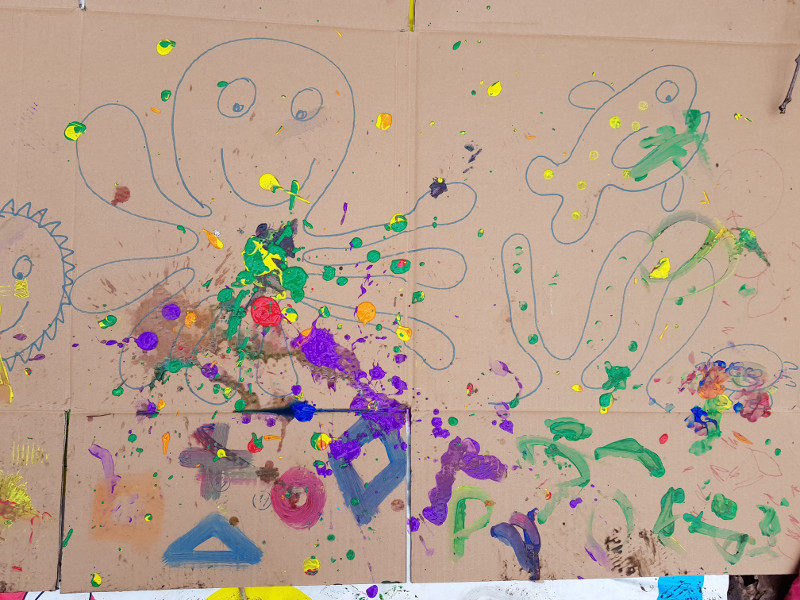What the Ladybird Heard
What the Ladybird Heard at the Seaside by Julia Donaldson and Lydia Monks
If your little one is a fan of the 'What the Ladybird Heard' series, they'll be thrilled to hear that there is a new installment. This time the crime fighting coccinellid is off to the seaside! You can hear the story read aloud by the illustrator Lydia Monks here, as well as the animal noises song performed by Julia Donaldson and her husband Malcolm.
The themes in these stories can take you on a journey in lots of different directions. For example, your child might be interested in ladybirds or other insects, farm animals, zoo animals, London landmarks, or sea creatures. Let the learning be guided by what appeals to them.
Learn with the Ladybird
- Exploring colour: many species of ladybird are red. The bright colour is a warning to predators that they taste yucky, so they don't get eaten! What other bright colours can you spot in your house or garden? Where else does the colour red signal 'danger' or 'stop'?
- Observation skills: can your child spot the glittery ladybird on every page of the book? What else can they see in the pictures? Can you find any minibeasts in your outdoor space?
- Counting: the most common types of ladybird in the UK are the seven-spot and the two-spot. Can you count those numbers on your fingers or toes? How many legs does an insect have? (six) How many arms does a common starfish have? (five) How many legs does an octopus have? (eight)
- For older children: ladybirds are symmetrical. What does this mean? How can something that's symmetrical have an odd number of spots? Look closely at the picture together.
- Ladybirds are not usually known for their crime-fighting skills, but they are a favourite with gardeners. This is because they eat aphids, which are considered a pest. You can attract ladybirds to your garden by planting flowers such as marigolds, nasturtiums or sunflowers, or simply by allowing the dandelions to flourish.
- Make a ladybird home using things you're bound to have in your recycling box: a plastic bottle, newspaper and corrugated cardboard.
- Find out more fascinating facts about ladybirds here.
What the Ladybird Heard at the Seaside
I was very excited when I learned that the new book was going to have a seaside theme, because we're big fans of all things fishy. I don't consider myself to be very arty, but I feel like drawing a fish or seaweed is much easier than drawing say, a horse or a tiger, because they can be more 'blobby' or abstract. Try drawing an outline of an underwater scene and let your little one fill in the gaps with paint, crayon or collage.

Similarly play dough is easier to shape into a star fish or an octopus than a monkey. And if your child has mixed all the play dough colours together to make the dreaded 'grey dough', simply turn it into a whale!

We won't be able to get out to the seaside for a while, but you can have fun recreating it in your garden if you've got some sand, a paddling pool, or even just a bucket of water! Don't forget your hat and sunscreen. Your child might like to role play being an ice cream seller. What's your favourite flavour? Mine is mint choc chip.
More Adventures
The original story, What the Ladybird Heard, and it's sequel, What the Ladybird Heard Next, are perfect for practising your farmyard noises. If you've got some farm animal toys, how about acting out some of the scenes? You can talk about how the clever ladybird tricks the two bad men, or draw a sketch map of the farmyard like the one in the book.
The third installment of the series sees the plucky little ladybird take a trip to the 'town', which is unmistakeably London. The opening page is a beautiful scene featuring Big Ben, the Gherkin, the Shard, Tower Bridge, the London Eye, St Paul's and Buckingham Palace. Instead of farm animals, this story features zoo animals. It can be great fun to pretend to be a lion, crocodile, or Monkey Joe! There are also lots of dogs in the book - how many breeds can you name?

Can you spot the ladybird? Let me know what fun you and your little one get up to!